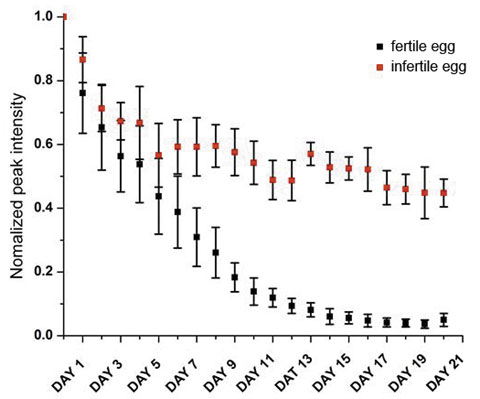



In-Ovo Monitoring of Embryonic Development Could Help to Optimise Poultry Hatchery Operations
Researchers at the Georgia Tech Research Institute and Auburn University are investigating whether the status of an avian embryo can be monitored and its hatch time predicted, using a non-invasive and rapid spectrophotometric technique to track the changing embryo in-ovo or inside the egg, according to a report from the Agricultural Technology Research Program at Georgia Tech Research Institute (GTRI).Each month, more than 700 million “broiler” eggs (eggs from chickens that are bred for meat production) are hatched in the United States. Typically, it takes a total of 21 days for an egg to hatch. This time-frame includes incubation, inoculation, removal of dead eggs, and transfer of viable eggs to the hatcher. A number of factors, ranging from storage time and the age of laying hens, to temperature and humidity levels, to breed type, can have an effect on the developing embryo as well as hatchability.

A collaborative project being conducted by the GTRI and Auburn University is investigating whether the status of an avian embryo can be monitored and its hatch time predicted. The team has developed a non-invasive and rapid spectro-photometric technique to track the changing embryo in-ovo or inside the egg. This method allows researchers to predict when individual eggs will hatch, which in turn, should provide insight into a number of practices from animal health and welfare to the inoculation regime.
Hatchability experiments were recently conducted where eggs were taken all the way to hatch and spectral readings were recorded at approximately the same time daily for 21 days (see graph below). Different temperatures, humidity levels, and with/without egg turning were examined. Analysis of the spectral data showed fertile, developing eggs changed at a greater rate than infertile eggs. A number of eggs were removed from the process and placed at a lower temperature to determine if the spectral changes continued. The previously observed spectral changes slowed significantly for the cooled eggs.

“At a very early point, spectral data indicates the rate of embryonic development for each egg if the hatchery is running consistently,” explains Robert Wallace, a GTRI research chemist who is leading the research.
Perhaps the greatest overall benefit, he says, is spectral data can show whether individual eggs within an incubator are developing at different rates or if an entire incubator is developing outside of the established norm, giving hatchery managers the ability to better manage and thus optimize operations.
For example, humidity, air flow, temperature and other factors may be changed over the course of the incubation process depending on the development of the chicks. In addition, the ability to track mortality may be beneficial as removal of dead eggs may prevent possible contamination of viable eggs that are also present.
July 2012











